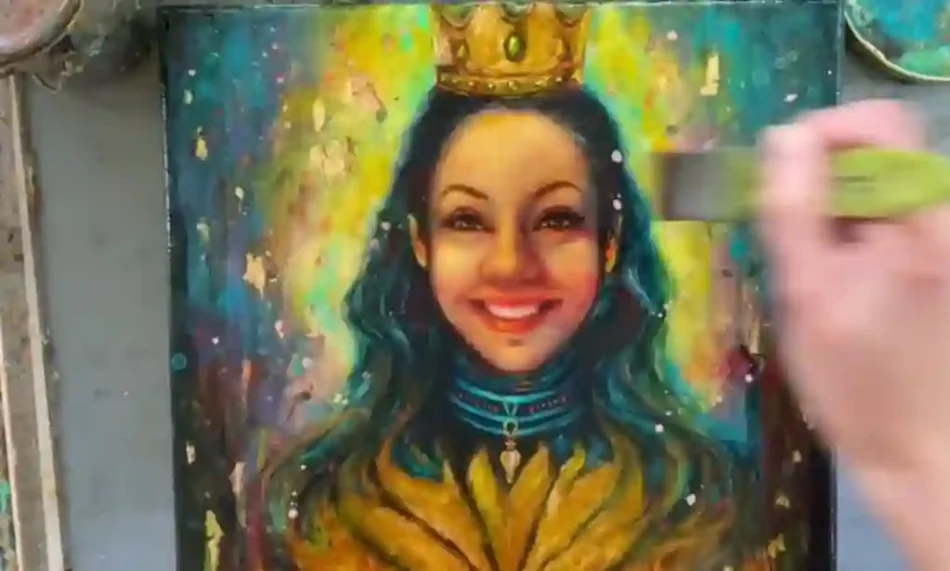Still life paintings have been a staple of art for centuries, allowing artists to explore the beauty of everyday objects in a controlled setting. While the term “still life” may suggest a static subject, oil painters have long embraced the challenge of infusing energy and dynamism into their compositions. In this article, we’ll delve into the world of oil still life paintings and explore how artists create dynamic and captivating compositions from seemingly static objects.
1. Selecting Compelling Objects:
The foundation of a dynamic still life painting begins with selecting intriguing and meaningful objects. These objects should not only be visually appealing but also convey a story or evoke emotions. The choice of objects sets the stage for the narrative within your composition.
2. Composition and Arrangement:
The arrangement of objects within the composition is a critical aspect of creating dynamism in still life paintings. Consider the placement, spacing, and angles of objects. Experiment with asymmetry and overlapping elements to add depth and visual interest.
3. Playing with Perspective:
Changing the perspective from which you view the still life can inject energy into your composition. Try exploring the subject from different angles, such as looking down on the objects or positioning them at eye level. Changing the viewpoint can create a sense of movement and engagement.
4. Lighting and Shadows:
Manipulating light and shadows is a powerful technique for adding depth and drama to still life paintings. Play with dramatic lighting to create bold contrasts between light and shadow areas. The interplay of light and shadow can emphasize the form and texture of objects.
5. Color Dynamics:
Consider the color palette of your still life. Vibrant and complementary colors can create visual excitement and energy. Use color harmonies to guide the viewer’s eye through the composition. Experiment with the interplay of warm and cool tones for added complexity.
6. Textures and Surfaces:
Objects in a still life often vary in texture and surface quality. Capturing these differences adds tactile dimension to your painting. Whether it’s the smooth surface of a ceramic vase, the roughness of a wooden table, or the translucency of glass, texture enhances the realism and dynamism of your composition.
7. The Rule of Thirds:
The rule of thirds is a compositional guideline that can be applied to still life paintings. Divide your canvas into a grid of nine equal parts, and position key elements along the gridlines or at the intersections. This technique can create balance and visual interest in your composition.
8. Experiment with Reflections:
Incorporating reflective surfaces, such as glass or polished metal, can introduce complexity and movement. Reflective objects can bounce light and colors around the composition, creating a dynamic interplay of reflections and distortions.
9. Implied Motion:
While still life subjects may appear stationary, you can imply motion through the arrangement and positioning of objects. Suggesting that an object has just been placed or is in the process of being moved can add a sense of narrative and action.
10. Depth and Space:
Create a sense of depth by carefully rendering objects in the foreground, middle ground, and background. Use atmospheric perspective to soften and blur distant objects, enhancing the illusion of space. This layering adds depth and dimension to your composition.
11. Storytelling Elements:
Incorporate storytelling elements into your still life. A partially opened book, a handwritten letter, or a spilled glass of wine can introduce a narrative element that engages the viewer’s imagination and adds a sense of movement to the scene.
12. Experimentation and Play:
Don’t be afraid to experiment and play with your still life compositions. Try unconventional arrangements, viewpoints, and lighting setups. The process of exploration and discovery can lead to unexpected and dynamic results.
Conclusion:
Still life paintings, often associated with tranquility and contemplation, can be transformed into dynamic and captivating compositions through careful consideration of composition, lighting, color, and storytelling elements. Artists have the power to breathe life and energy into seemingly static objects, creating narratives and engaging viewers on an emotional and visual level.
Creating dynamic oil still life paintings is not only a testament to an artist’s technical skill but also their ability to infuse meaning and movement into the ordinary. The interplay of elements, textures, and perspectives allows artists to craft narratives that transcend the stillness of the objects they depict.
So, the next time you set up a still life, think beyond the static and embrace the challenge of creating a dynamic and visually arresting composition that invites viewers to explore the wonders within.








